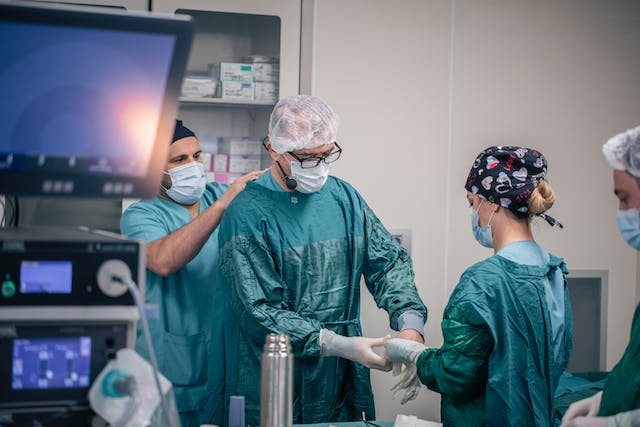2024: A Look Ahead in Healthcare Trends
As we stand on the brink of a new year, the landscape of healthcare professions and the industry at large is poised for significant transformations and advancements. The year 2024 brings with it a wave of pivotal trends and developments that promise to reshape the healthcare job market and revolutionize industry practices. Let’s delve into the anticipated trends and shifts that will define the healthcare sector in the upcoming year, presenting a roadmap for the challenges and opportunities that await those in this vital and evolving field.
Healthcare Wages
The 2024 Salary Guide by Robert Half highlights key trends in employment and starting salaries across various industries. Here are the main takeaways:
Demand for Raises: Despite economic uncertainty, 63% of workers plan to request raises by year-end, driven by concerns about inflation, increased responsibilities, and feeling underpaid compared to market rates. Nearly a third would consider changing jobs if a raise isn’t granted.
Preference for Flexibility: Over 60% prioritize jobs offering flexible work over higher-paying roles with rigid in-office requirements, especially among Gen Zers and working parents.
Common Negotiation Mistakes: Almost half of workers admit to negotiation errors, such as accepting lower salaries for their skills/experience and focusing excessively on pay rather than considering the entire compensation package.
Salary Transparency’s Impact: Hiring managers recognize the benefits of salary transparency in job postings, believing it attracts better candidates and provides a competitive edge. Workers also value pay transparency and would reject roles without disclosed salary ranges.
Market Dynamics: Companies are willing to increase starting salaries (51%) and introduce new perks (46%) to attract skilled talent in a candidate-driven market. Dawn Fay, Operational President for Robert Half, emphasizes the importance of competitive pay, flexible work options, and employee engagement strategies in retaining top talent, especially in uncertain economic times.
Salary increases in 2024 are expected but might be more restrained than previous years. The guide provides location-specific salary ranges and national data for various positions, emphasizing the need for employers to benchmark salaries, offer hybrid work options, and enhance employee engagement to attract and retain talent.
What Factors Will Impact the Healthcare Industry?
The healthcare industry is set to undergo significant shifts in 2024, driven by factors like rising costs, drug pricing transparency, and the impact of the US presidential election. Here’s a breakdown of the nine major developments anticipated:
Escalating Healthcare Costs: Employers are focusing on cost control and employee satisfaction amidst concerns over inflation, provider shortages, increased mental health needs (read more on burnout), and deferred preventive care.
Mental Health Prioritization: Employers aim to enhance access to mental health services, leveraging virtual providers and on-site services at reduced costs.
Preventative Efforts: Increased focus on cancer screenings and refined patient navigation, exploring biomarker screenings and advanced therapies for improved outcomes.
Drug Pricing Concerns: Employers demand greater transparency in prescription drug pricing, with soaring costs posing sustainability challenges.
Global Consistency: Global employers seek consistent healthcare programs across countries while respecting local regulations and cultural differences.
Well-being Integration: Employers expand well-being strategies beyond physical health to include mental health, financial wellness, and job satisfaction.

Election Impact: The outcome of the US election could influence healthcare policies, including the fate of the Affordable Care Act, drug pricing, mental health, and equity issues.
Preemption for Employers: As Employee Retirement Income Security Act of 1974 (ERISA) reaches 50, employers aim for consistent benefits regardless of location, emphasizing equitable offerings for their workforce.
Healthcare Staffing for 2024
At Momentum Healthcare Staffing, our mission is to facilitate this transformative journey within the healthcare sector. Whether you’re an individual seeking the perfect opportunity to excel in your healthcare career or a healthcare facility in search of the ideal staff to meet your needs, we stand as a bridge between aspirations and achievements. Our dedicated approach ensures that individuals find fulfilling roles while healthcare facilities secure the talented professionals they require, fostering a symbiotic relationship that propels the industry forward towards greater excellence and innovation. Let us be your partner in navigating the dynamic landscape of healthcare employment, empowering you to reach your full potential in 2024 and beyond.
Sources:
Prnewswire.com
pharmexec.com
openai.com



























Recent Comments